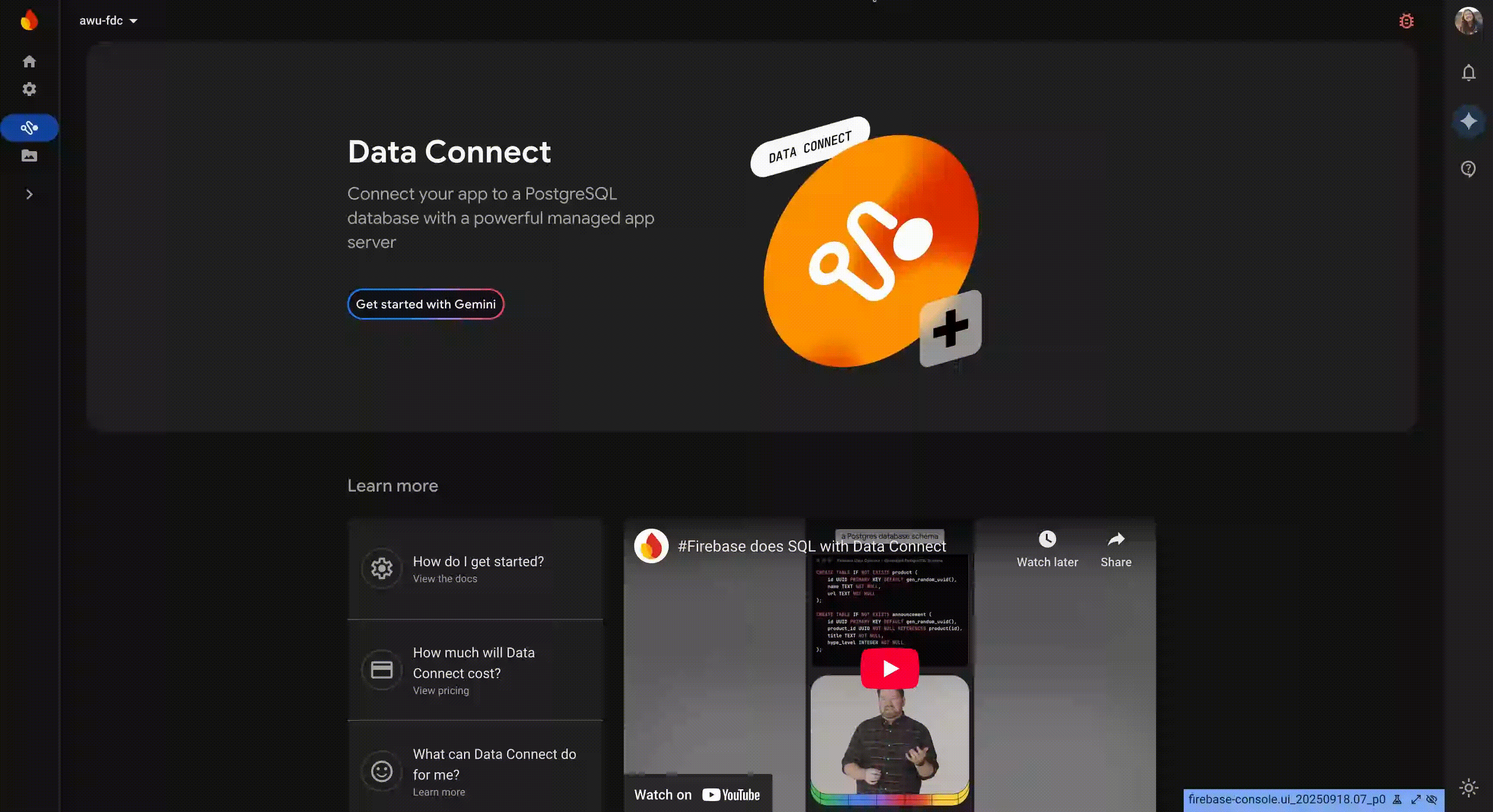As more and more of you adopt Data Connect, we’ve been listening to your feature requests on Firebase UserVoice. We’re excited to announce these new features that you can now use:
- Temporary databases and the ability to seed data lets you get started with Data Connect more quickly by providing a way to add and query data while your permanent database is still provisioning
- Firebase console improvements let you edit your schema during onboarding and view your data in table format
- Access transparency gives you control and information about when Google personnel access your data
Read more below for more information about each one!
Get started more quickly
Want to get started right away with building your app while the database gets provisioned? Now you can with a temporary database, which gets discarded after your permanent database finishes provisioning! Using either the Firebase console or the Firebase CLI, you can jump into Data Connect instantly, skip provisioning time, and get right into setting up your database. Even better, you can use the temporary database to seed data, making the process of getting Data Connect up and running even faster.
In the past when you provisioned a new Cloud SQL instance for a Data Connect service, you had to wait up to 20 minutes for the system to finish provisioning the database. With temporary databases, you can jump right into adding data and querying the database after creating the schema. Once the permanent Cloud SQL database instance is done provisioning, all of the data from the temporary database gets automatically moved to the permanent database.
To help you even further on getting started, you can now seed data to your database. You can write mutations to manually add data, then write queries. For both steps, you can use Gemini in the Firebase console or using MCP servers to help craft seed data for your custom schema and query the data afterward. You can later delete the data when it is no longer needed, such as using the database in production.
You can seed data with your permanent database, but you can also seed data in the temporary database while your permanent database is still provisioning. Instead of waiting to use Data Connect, you can now dive right in by seeding data and querying it!
Improvements in the Firebase console
You can now view data in a table after running a query and manually edit your schema during onboarding directly from the Firebase console!
To manually edit your schema, you can view code or click on the three dots next to a certain field to modify it.

Access transparency
Data Connect now has Access Transparency, Access Approval, and personnel controls in Assured Workloads, giving you control and information about when Google personnel access your data.
Access Transparency is a program that lets Google Cloud services provide you with near real-time logs when Google personnel access your data. This gives you visibility into when, why, and how your data is accessed by Google personnel. The log entries include details such as the affected resource and action, the time and reason for the action, and information about the accessor. The information about the accessor includes details about the physical location, employing entity, and job category of the Google employee. For more information about the details covered in Access Transparency logs, see Log field descriptions.
In conjunction with Access Transparency, Access Approval lets you approve or deny these accesses before they happen, giving you enhanced levels of granular control over when Google may access customer data.
Lastly, you can also set personnel controls in Assured Workloads to specify settings about personnel trying to access your data. For example, you can say a Googler must be in the USA to access your project.
To learn how to access all of these, check out the documentation.
Try it out!
We’re always incredibly excited to see what you build with Data Connect and these new features! Your feedback is invaluable as we use it for our roadmap going forward, so please continue to share your thoughts and requests on Firebase’s UserVoice!
